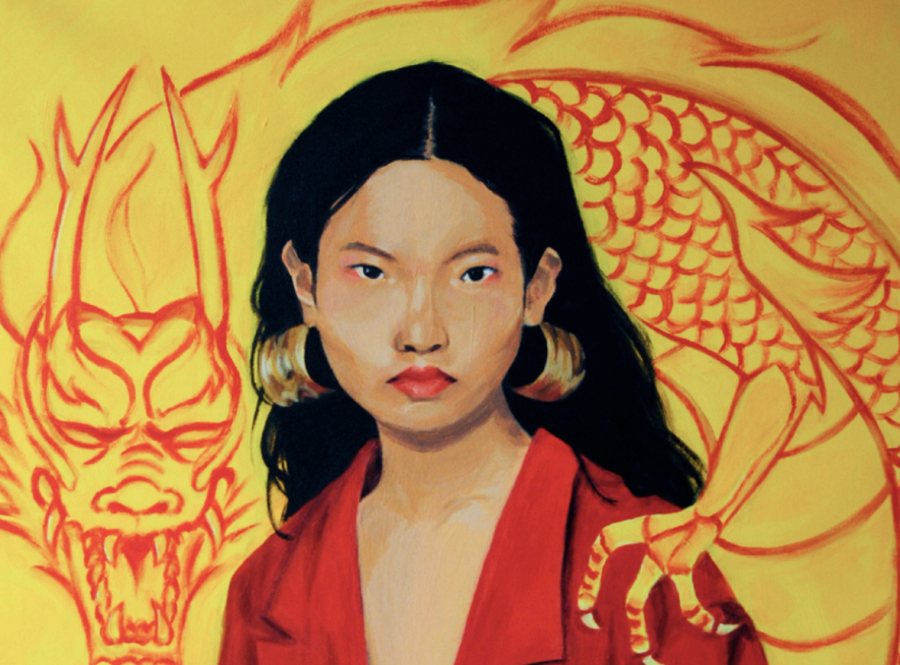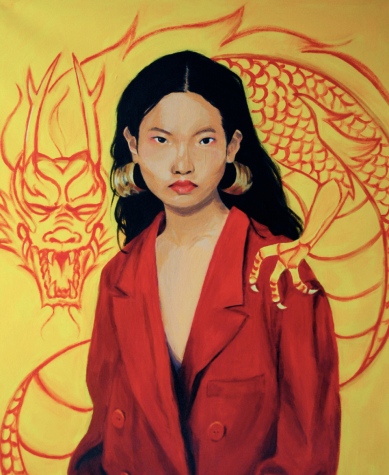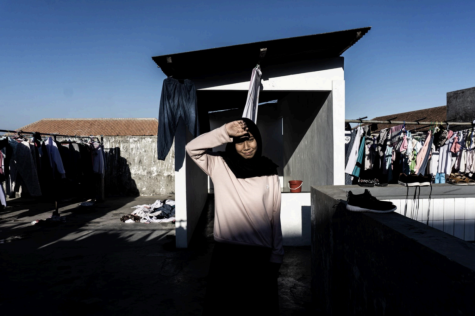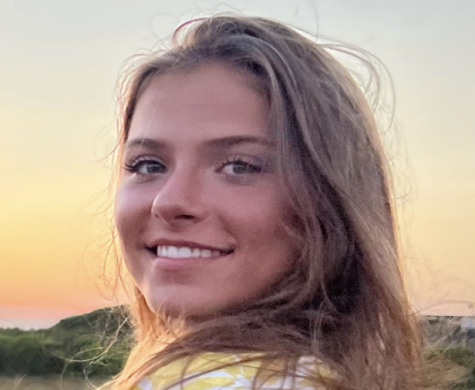Knights in Conversation: Student artists
September 9, 2021
To spotlight Upper School (US) students who pursue art beyond the classroom, The Vanguard sat down with Sophie Li, Andrei Buchatskiy, and Olivia Bancel (all ’22). Keep reading to hear the trio discuss their projects, opinions, and experiences with different corners of the art world and to see their favorite creations.
Tell us a little bit about the kind of art you do outside of school.
Sophie: I’m a visual artist. At BB&N, my focus is drawing and painting. At home, I do a lot of digital art. I do a lot of art for myself, practicing and doing character design.
Andrei: I do architecture and graphic design. I love art, but drawings have never really been my strong suit, so architecture is fun because it’s a convenient way to put your ideas into fruition. It’s all programs and knowing how to use them correctly.
Sophie: I totally get what you mean about using programs because what I found with digital art is there are so many possibilities with the art that you can make.
Olivia: I take photos. My mom’s a photographer. For so long, I would follow her and take photo shoots, so I’ve been seeing photos for so long and grown up with it. I really love taking portrait photos and having photo shoots.
Why do you think your art medium is unique—or maybe the best?
Andrei: Architecture is the most practical compared to photography or drawing. It’s used in the real world. And a house can represent a person. You can tell what kind of person they are by looking at their house.
Olivia: That’s a good point. Architecture is also a mix of math and logic, plus art, which is so cool. With photography, I always say, ‘A picture is worth a thousand words.’ I was a part of a group last year [with] a bunch of kids from Massachusetts, all of different religious affiliations. We’d have tough conversations about what was going on in the world from a religious standpoint. We talked about politics, but we did it through art. Sometimes, picking up conversations like that is so gross. But taking one big photo of [these issues] made it simpler.
Sophie: [Visual art] is incredibly personal. It’s a way of expressing yourself, recounting your own experiences, and sharing those. Oftentimes, it’s artists telling stories, evoking emotions in the viewers, and I think that’s unique.
What kind of projects have you worked on independently?
Olivia: A few years ago, my mom, got into [a photography workshop] in Indonesia. I was going into freshman year and she [said,] “Do you want to come?” For the workshops you research where you’re going, and find out what interests you, then take photos of that thing all day, for two weeks. My mom decided to go to this all-girls, Islamic school there. I got the same photos as her at the same place. Every morning, we’d go at four. We heard them pray. That was so moving. They were all so nice, and I got to learn so much from them. And it was very much a growing thing for me. I was super young, but I needed that. And the photos I took I really love. My mom and I both had our presentation side by side [on an Instagram Live]. [My mom’s] photos looked down on [the girls.] But because I was their height and their age, all my photos felt really personal because they were eye level. I love that. I learned so much from that experience.
Andrei: This summer, I worked at Descartes Studios, [an architectural bureau,] and on a cultural project called The Shadows Project, [a social media project with posts that examine America’s cultural, social, and political aspects through history in colorful graphics]. Right now, I’m working on the design team for that. And that’s where I do my graphic design. The whole project is taking history and making it relatable to the youth. Finding a way to incorporate history and make it feel young and modern is a sick way to look at the projects. As for Descartes Studios, I just worked on a parking lot and 3D maps to see how a building would look in a section of town. I learned some new [building design] programs [and] then made it look realistic. It was nice to see my projects come to life [in renderings].
Sophie: That’s really awesome. The most recent thing I can think of would be a game design program that I [did]. It wasn’t only centered on art. It was game design, computer science, and sound design. We were working in a team and developing one game over the course of four weeks. And a big part of games is the art style. So I was working with artists, primarily doing digital art in a pixel style. It was a title screen [User Interface], which is the user interface that shows up on screen, Tilemap, which is the layout of the levels, character concept art, cutscenes, sprite animations—all that stuff. That was really cool because before that I had just been doing visual art as a hobby. I don’t think I’m going to go into game art, but it showed me an example of how people are using digital art in the industry to make content.
What advice would you give to your former self as you had just begun to pursue art?
Olivia: For me, I have a tough time when it comes to arts at BB&N because I feel like sometimes it’s looked down upon. They have a really great program, and the teachers are amazing. But I’ll tell people, “Oh, I’m taking photography this year,” and it’s just kind of forgotten or isn’t seen as cool as doing cool math stuff. I’ve had to grapple with that my whole time at BB&N. [I have to tell myself], “You’re good at art; this is your thing. You don’t have to be good at math.” So I think I would tell myself not to listen to other people and to focus on where I shine, what I’m good at, and what makes me happy.
Andrei: I completely agree. I feel like art is seen as secondary. For me, I wish that I started [architecture] earlier, because [I] didn’t really hear or think about it before [sophomore year].
Sophie: I started art pretty early, but I wish I took more time to work on personal projects, because at school, especially [junior] year or freshman year, it was mostly working on still lifes. That was really helpful to learn, but I wish that I was able to work on my own style. Because right now as I’m trying to look at what I should put in my portfolio, I feel like I’m lacking a little bit of that.
“One of my favorite pieces is a painting I made in 10th grade in afternoon arts,” Sophie said. “It’s really special to me because it was one of the first times that I had an opportunity to make original paintings instead of following some sort of guideline. I appreciated being able to do something related to my heritage. The woman [in the paining] is Chinese and there’s this tiny dragon behind her like a guardian.”
“[This is] my favorite because it’s the most realistic one I did at [Descartes studios],” Andrei said. “And there’s a day view, but the night one is always sicker because you can really see the details of the rendering.”
“[My favorite is] a photo from Indonesia,” Olivia said. “This is one of the girls I really felt a connection with on top of the roof at their boarding school. I love this photo because you don’t really notice at first, but her hand’s parallel [to the roof]. This [photo] took so much editing to do. I had to work a lot making it look this way.”





